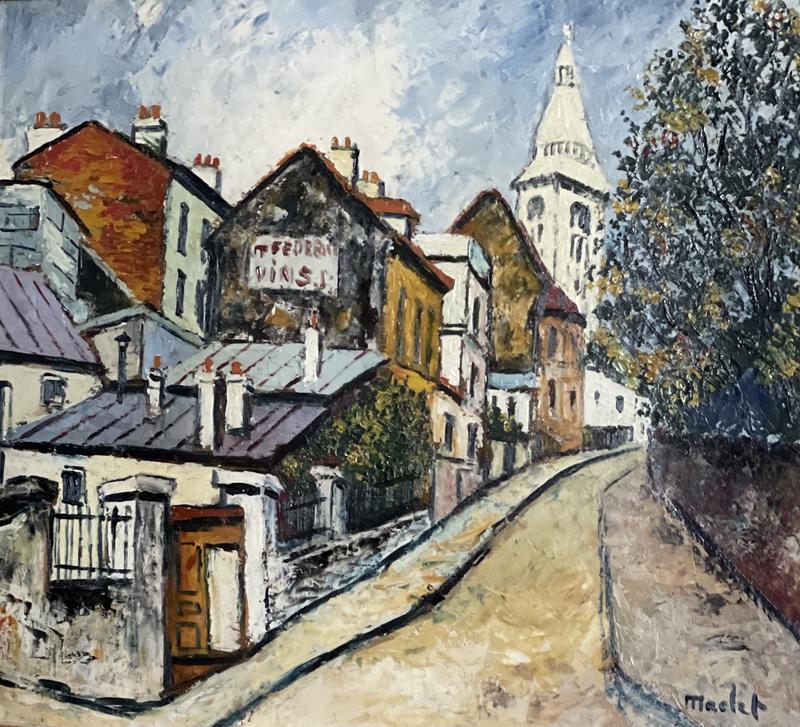Rue Lepic, Campanile Sacré Coeur, Vue de Montmartre

Jules Émile Élisée Maclet (12 April 1881 – 23 August 1962) was a French Impressionist painter, particularly well known for his views of Montmartre. He was born in Lihons-en-Santerre, Picardy, and was the son of a gardener and a laundress. He began his artistic career as something of a weekend painter; Maclet became a choirboy for the local parish church and Father Delval, the parish priest (also an amateur painter), would take the young Maclet out to sketch and paint in the countryside.
Despite his father’s wish that his son would be a gardener, Élisée moved to Montmartre in 1906. At that point he began executing paintings of the charming country landscape of Montmartre - anticipating the themes that Utrillo would eventually portray. Whilst still finding enough time to paint, he earned his living by varnishing iron bedsteads, decorating floats for gala nights at the Moulin Rouge, washing dishes and opening oysters.
The present painting entitled Rue Lepic, Campanile Sacre Cœur, Vue de Montmartre, is a fine example by Maclet, painted at the peak of his artistic capabilities. Rue Lepic is perhaps one of the most famous (and one of the liveliest) streets in Montmartre and yet Maclet decides to depict the subject without any human activity. Whilst the subject appears quiet and the streets are empty, the viewer senses and anticipates the hustle and bustle nearby, including the Moulin Rouge cabaret, the numerous shops, cafes, the famous Moulin de la Galette (the only windmill still working in the district).
When the First World War broke out in 1914, Maclet served as a medical attendant in a hospital run by the Little Sisters of the Poor. This enabled the artist to return to Montmartre for his breaks. Post WWI, his views of Paris earned him an increasing amount of recognition and success. Writers Collette, Francis Carco, and other well-known figures, as well as the American art dealer Hugo Perls were all great supporters. Max Jacob wrote about him. In 1923, Baron Von Frey, a wealthy Austrian manufacturer, gave Élisée the financial means to spend an extended period in the South of France. He stayed in the area from 1924-1828 and produced a number of wonderful landscapes and still life paintings.
In 1933, Maclet was institutionalised for mental difficulties and although he continued to paint and exhibit, he never completely recovered. He died in the Lariboisière Hospital in Paris on 23 April 1962 and is buried in the cemetery at Lihons, next to his parents.



